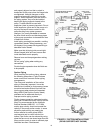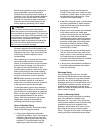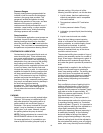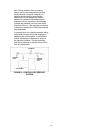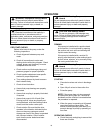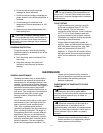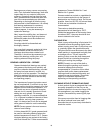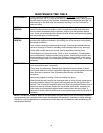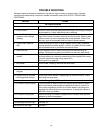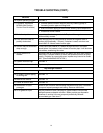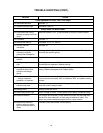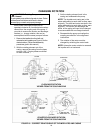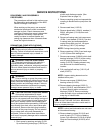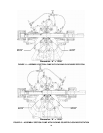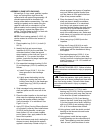
20
TROUBLE SHOOTING
Between regular maintenance inspections, be alert for signs of motor or pump trouble. Common
symptoms are listed below. Correct any trouble immediately and AVOID COSTLY REPAIR AND
SHUTDOWN.
CAUSES CURES
No Liquid Delivered
1. Lack of prime. Fill pump and suction pipe completely with liquid.
2. Loss of prime. Check for leaks in suction pipe joints and fittings; vent casing to remove
accumulated air. Check mechanical seal or packing.
3. Suction lift too high (a
negative suction gauge
reading).
If there is no obstruction at inlet and suction valves are open, check for
pipe friction losses. However, static lift may be too great. Measure with
mercury column or vacuum gauge while pump operates. If static lift is
too high, liquid to be pumped must be raised or pump lowered.
4. System static head too
high.
Check with factory to see if a larger impeller can be used; otherwise,
cut pipe losses or increase speed – or both, as needed. But be careful
not to overload driver by more than the service factor.
5. Speed too low. Check whether motor is directly across-the-line and receiving full
voltage. Frequency may be too low. Motor may have an open phase.
6. Wrong direction of
rotation.
Check motor rotation with directional arrow on pump casing. If rotation
is correct with arrow, check the relationship of the impeller with casing.
(This will require removing casing upper half.)
See Figure 10 on page 23.
7. No rotation. Check power, coupling, line shaft and shaft keys.
8. Impeller loose on shaft. Check key, locknut and set screws.
9. Impeller completely
plugged.
Dismantle pump and clean impeller.
10. System head or required
discharge head too high.
Check pipe friction losses. Large piping may correct condition. Check
that valves are wide open.
Not Enough Liquid Delivered
11. Air leaks in suction piping. If liquid pumped is water or other non-explosive and explosive gas or
dust is not present, test flanges for leakage with flame or match. For
such liquids as gasoline, suction line can be tested by shutting off or
plugging inlet and putting line under pressure. A gauge will indicate a
leak with a drop of pressure.
12. Air leaks in stuffing box. Replace packing and sleeves if appropriate or increase seal lubricant
pressure to above atmosphere.
13. Speed too low. See item 5.
14. Discharge head too high. See item 10.
15. Suction lift too large. See item 3.



